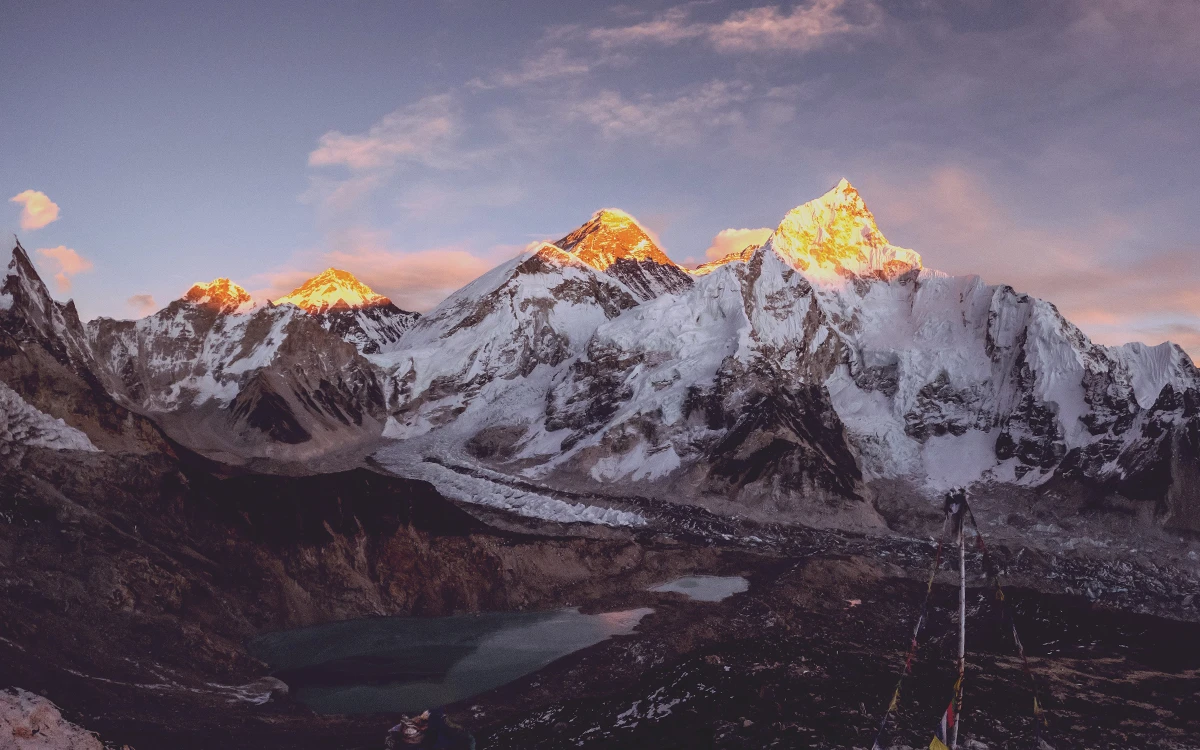
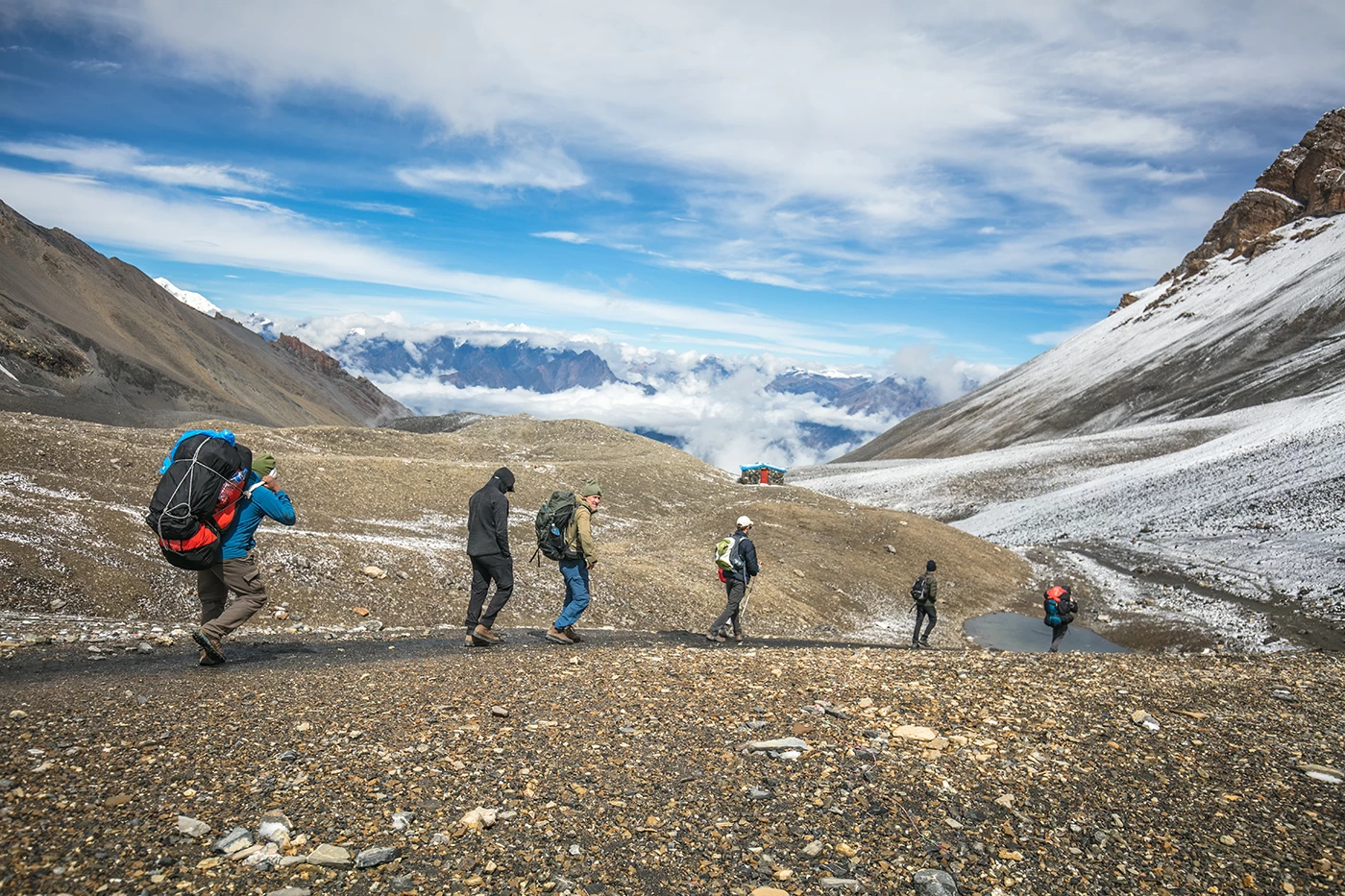
Embark on a transformative journey with the Annapurna Circuit Lodge Trek, one of Nepal's most iconic trails. This 120-180 km (75-115 mi) trek invites you to explore diverse landscapes, vibrant cultures, and thrilling challenges. Get ready to be captivated by breathtaking panoramas, charming villages, and ancient spiritual sites.
Syange Waterfall, Annapurna Circuit Trek.
The Annapurna Circuit Lodge Trek is a stunning adventure that takes you through the Annapurna region, offering an immersive experience of Nepal's natural beauty and rich cultural heritage. Starting from Kathmandu, the trek passes through villages like Chame and Syange, leading to the majestic Thorong La Pass at 5,416 meters (17,769 feet), before descending into the enchanting Lower Mustang.
At Thorong La Pass 5416m.
1. Scenic Drive and Villages: Your adventure begins with a scenic drive from Kathmandu to Besisahar, followed by another drive to Chame. The trail offers mesmerizing views of snow-capped peaks, crystal-clear rivers, and lush valleys, all while winding through welcoming villages where you’ll experience the local culture.
2. Rich Cultural Experience: As you trek, immerse yourself in the vibrant cultures of the Himalayas. Visit ancient monasteries and temples where spirituality is alive in the fluttering prayer flags. Engage with locals to gain insight into their daily lives, traditions, and festivals, creating memories that will last a lifetime.
3. Majestic Landscapes: Prepare to be awestruck by the stunning beauty of the Himalayas. The trek presents an ever-changing landscape, from lush forests and terraced fields to rugged mountains. Marvel at the towering peaks of Annapurna, Dhaulagiri, and other majestic summits that define the region.
Lower Mustang, Annapurna Circuit.
Before setting out on this life-changing trek, consider the following:
1. Physical Fitness: The Annapurna Circuit Trek demands good physical fitness. The trail involves long days of walking over uneven terrain, often at high altitudes. Being in good shape will enhance your trekking experience and allow you to tackle the challenges confidently.
2. Altitude Acclimatization: The trek reaches high altitudes, with the Thorong La Pass standing at 5,416 meters (17,769 feet). It’s essential to acclimatize properly to reduce the risk of altitude sickness. Make sure you’re prepared to take it slow and allow your body time to adjust.
3. Experience Level: While the trek is suitable for various experience levels, some sections can be challenging, especially if you’re not accustomed to trekking in the mountains. Having prior trekking experience can be helpful but isn’t mandatory.
4. Time Commitment: The trek typically takes between 10 and 21 days to complete, including travel time. Make sure you have sufficient time to enjoy the trek at a comfortable pace.
5. Logistical Preparedness: Proper planning is key to a successful trek. Ensure you have the necessary permits, gear, and a reliable guide if needed. A little preparation goes a long way in ensuring a smooth and safe adventure.
Walking down after crossing Thorong La Pass.
The best time to trek the Annapurna Circuit depends on your preferences for weather, scenery, and crowds. Here’s a breakdown of the two peak seasons:
1. Spring (April-May):
2. Autumn (September-November):
Annapurna Circuit Trek, NEPAL.
The Annapurna Circuit Lodge Trek offers a blend of cultural immersion, natural beauty, and challenging terrain. It’s perfect for trekkers who seek an unforgettable experience. Whether you’re drawn to the snowy peaks, the ancient monasteries, or the cultural richness of the region, this trek promises to be a life-changing adventure.
Thorong La Pass: At 5,416 meters (17,769 feet), Thorong La Pass is the trek’s crowning achievement. The challenging climb to the pass rewards trekkers with panoramic views of the surrounding mountain ranges. Ensure proper acclimatization to enjoy a safe and memorable experience
|
|
|
|---|
Start your day with breakfast, followed by an early morning journey to Besisahar via a private Jeep, provided there are more than three people in the group. For groups with less than three individuals, arrangements will be made for a Bus or Local Transport. The drive from Kathmandu to Besisahar spans 172 km and takes approximately 5-6 hours.
Besisahar, Lamhung, Annapurna.
On the second day of your journey, we continue with another scenic drive. Today's destination is Chame Village, the starting point of your trek. Covering a distance of 70 km, the drive is expected to take around 5 hours. En route, you'll be treated to picturesque views of stunning waterfalls and majestic mountain landscapes.
Waterfall at Syage, Lamjung.
Embark on your true Annapurna Himalaya trek today as you head towards Upper Pisang. Covering a hiking distance of 14.5 km with an average hiking time of 5 hours, you'll experience an altitude gain of 600m. Brace yourself for a journey where fatigue fades away, replaced by the continuous allure of breathtaking landscapes.
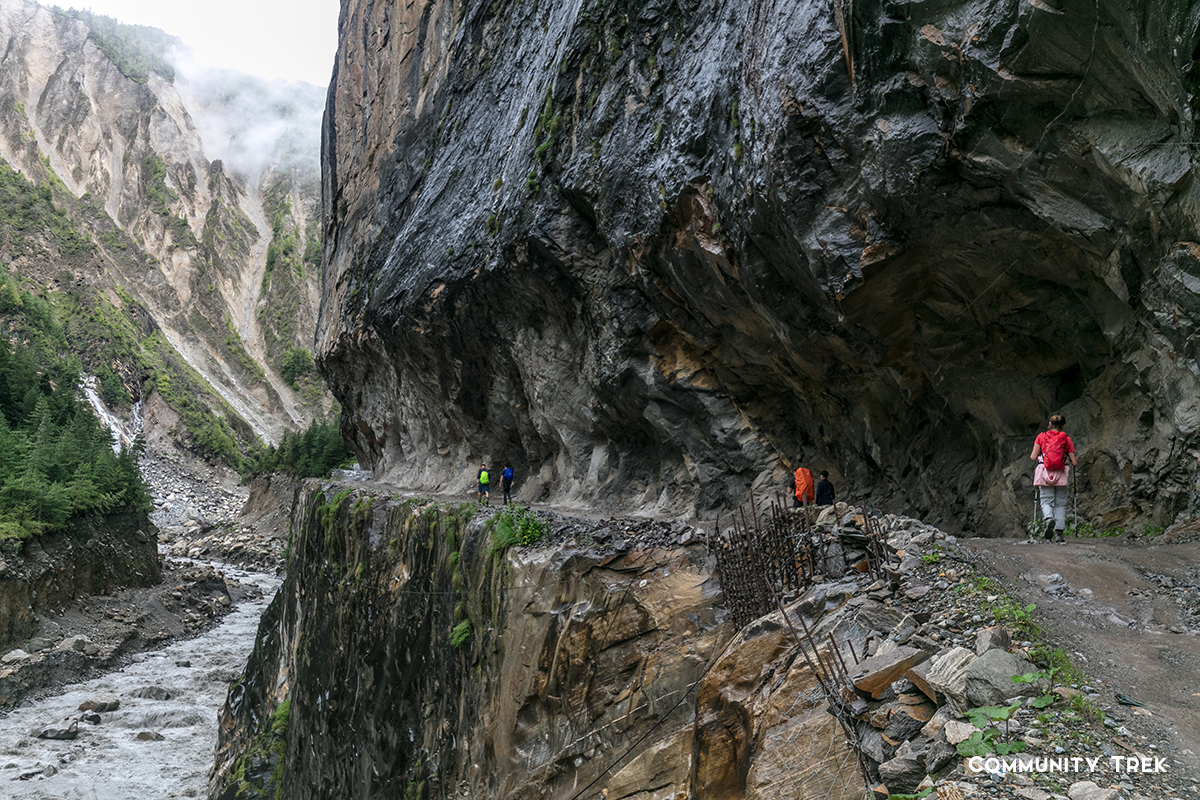
Start your day with a post-breakfast stroll through enchanting landscapes and dense pine jungles, all against the backdrop of the majestic Annapurna Himalayan range. Today's walk spans 10.5 km, taking approximately 5 hours to reach Nawal Village. Nestled amidst the mountains, this village boasts a monastery and provides a unique opportunity to observe the local way of life among the mountain people.
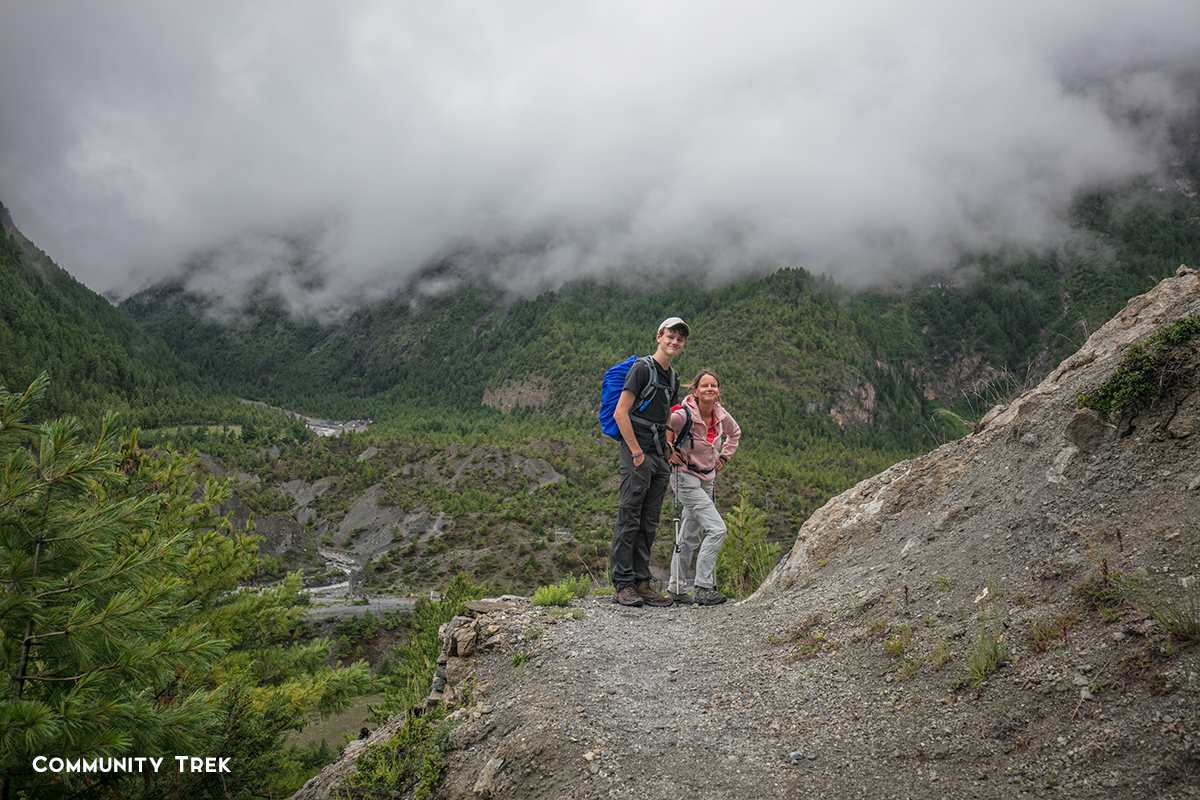
Today, you'll reach the renowned mountain village of Manang. The total walking distance for the day is 9.5 km, requiring approximately 4-5 hours to arrive. Along the way, you'll pass through the village of Braka, known for its distinctive structure. Consider stopping in Braka for a lunch break as you continue your journey towards the captivating destination of Manang.
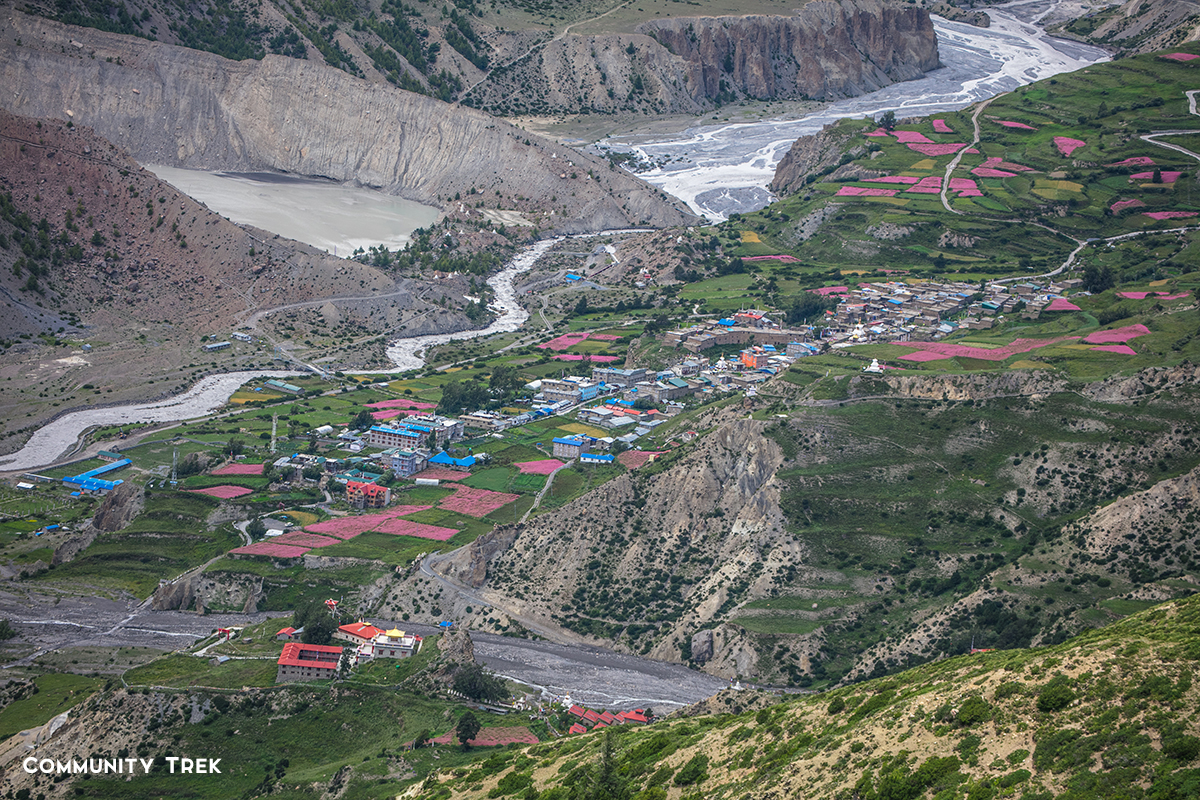
Manang Valley, Annapurna.
Today is an acclimatization day, following the principle of walking high and sleeping low. You have several hiking options, such as Ice Lake or Milarepa Cave. I highly recommend the Ice Lake trek, although it entails a long day of walking, the experience is truly worthwhile. This hike offers a remarkable opportunity to marvel at panoramic views of snow-capped mountains, with the chance to reach Ice Lake at an elevation of 4600m in the Annapurna region of Nepal. The ascent will take approximately 4 hours, followed by a 3-hour descent, totaling 7 hours for those comfortable with an extended trek.
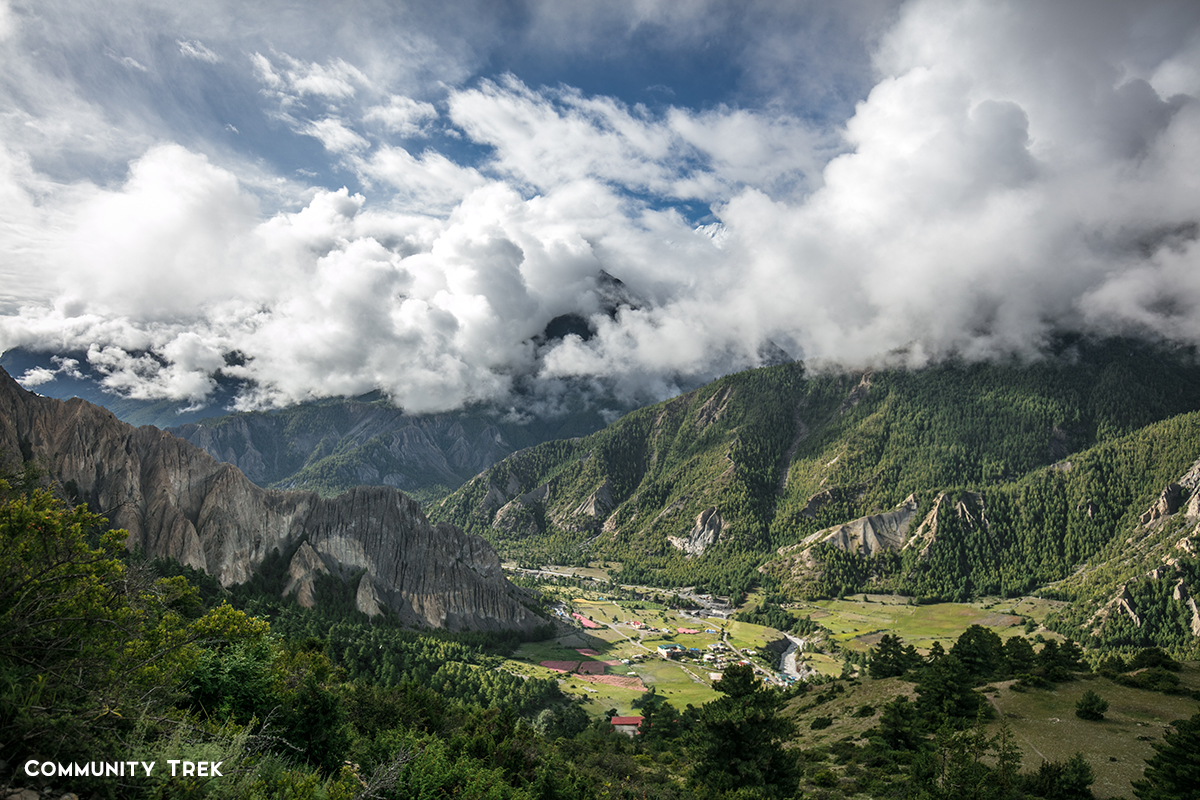
View from Ice Lake trail.
Today entails a half-day walk to Yak Kharka, covering a distance of 9 km with an average walking time of 3 hours. You'll arrive in time for lunch, and post-meal, consider a brief excursion around the village to help your body acclimate to the high altitude.

Today marks another short day of walking as you head to Thorong La Phedi. Covering a distance of 6 km with an average hiking time of 3 hours, it's a day to relax and prepare for tomorrow's significant trek. Upon reaching Thorong La base camp, there's an option for a short hike to aid your body in acclimatization.
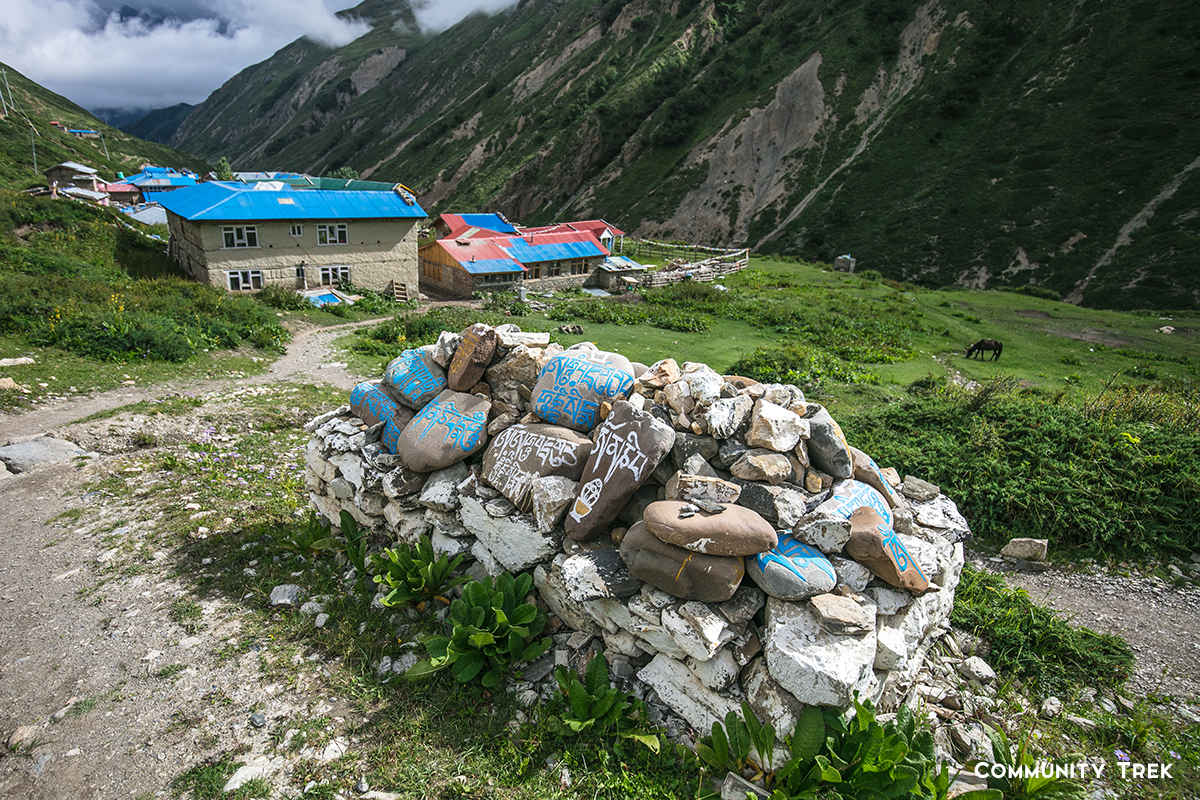
Today marks a pivotal moment in the Annapurna Circuit Trek, requiring an early start at around 4:30 AM. The initial ascent to High Camp takes about an hour, providing an opportunity to pause for hot tea and witness the sunrise. Continuing toward Thorong La Pass at 5416m, the high altitude demands a slow and steady pace, emphasizing regular hydration to combat the challenge of breathing. Carry chocolate and energy bars to replenish your stamina during the 4-5 hour ascent.
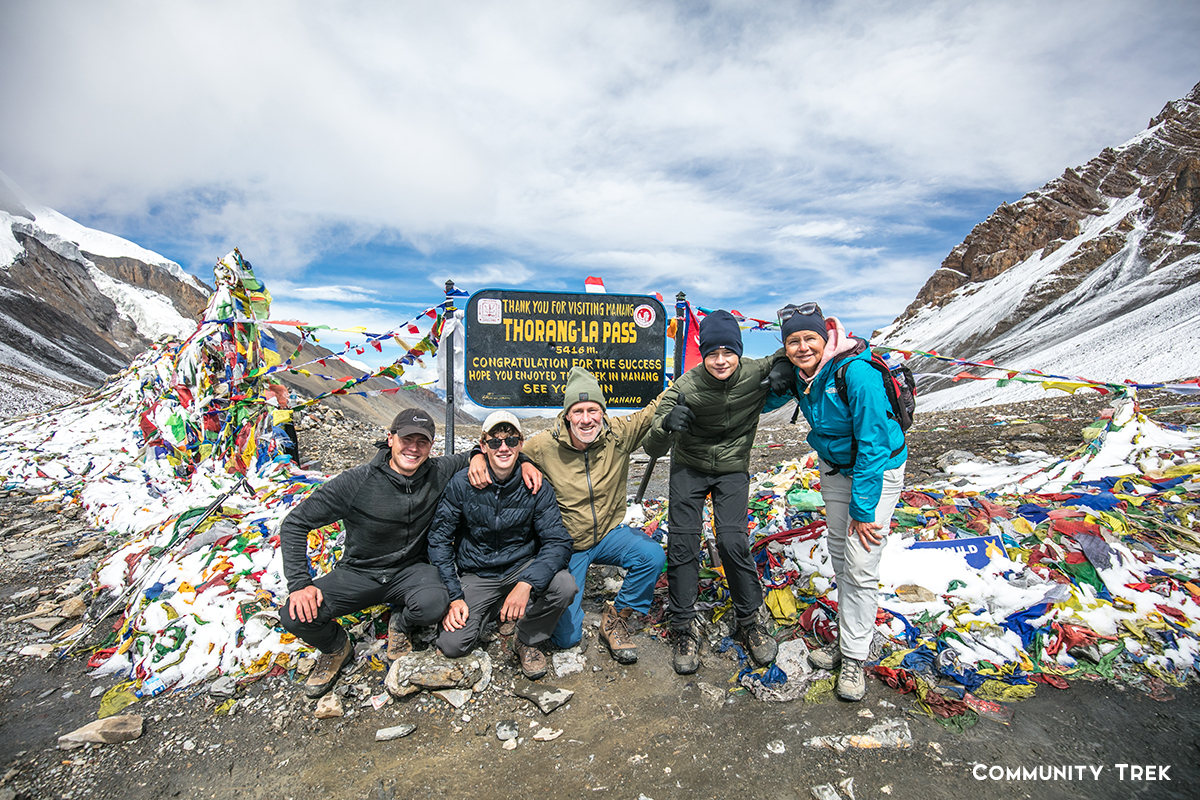
Upon reaching the summit, revel in the transformative experience, capturing moments with photographs and sharing the joy. Descend for about 4 hours to Muktinath, ensuring you take it slow as it's a long and exhaustive day. Allow yourself ample time for rest and recovery in Muktinath, appreciating the accomplishment of the day's journey.
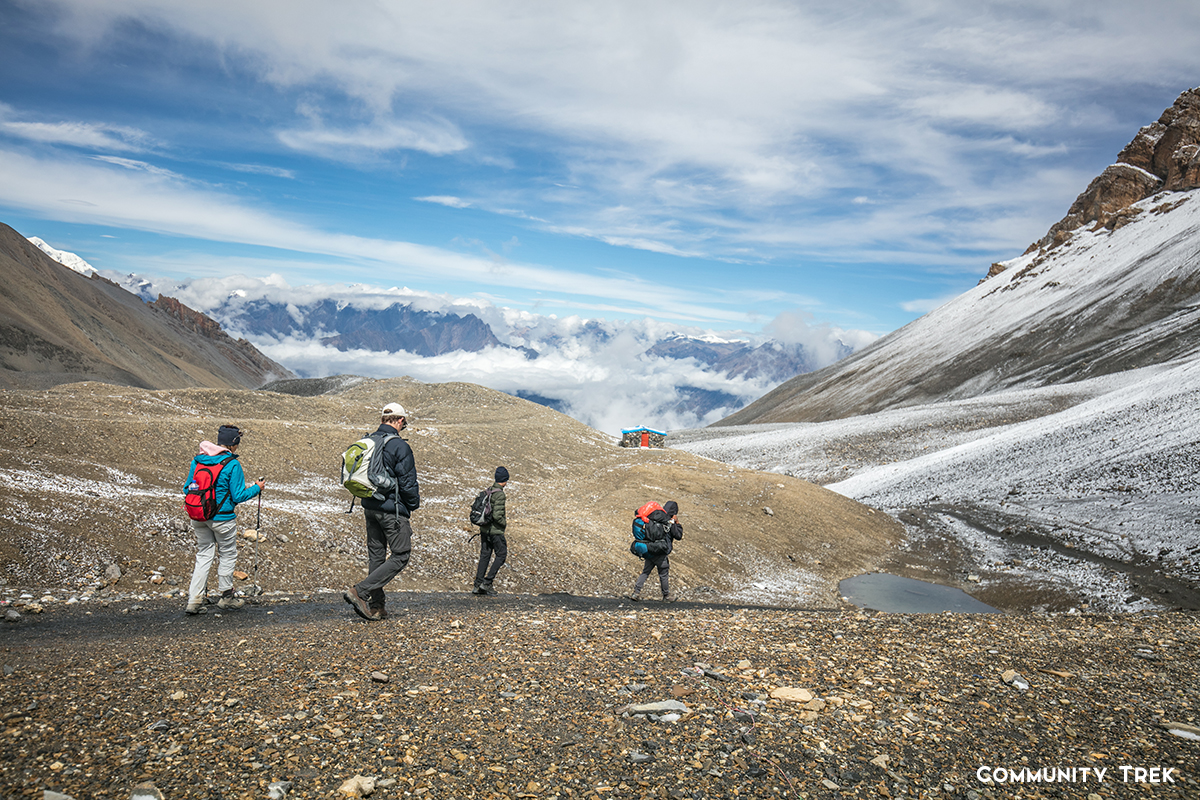
Embark on a drive from Muktinath to Pokhara, covering a distance of 162 km. The journey takes approximately 6-7 hours. In the evening, indulge in a Farewell Dinner, a tradition that involves a small celebration with your trekking crew. Show your appreciation by offering drinks and food to the hardworking team, creating a memorable last evening together. Express your gratitude with tips, adding to the happiness of the crew and bringing a unique joy to your journey's conclusion.
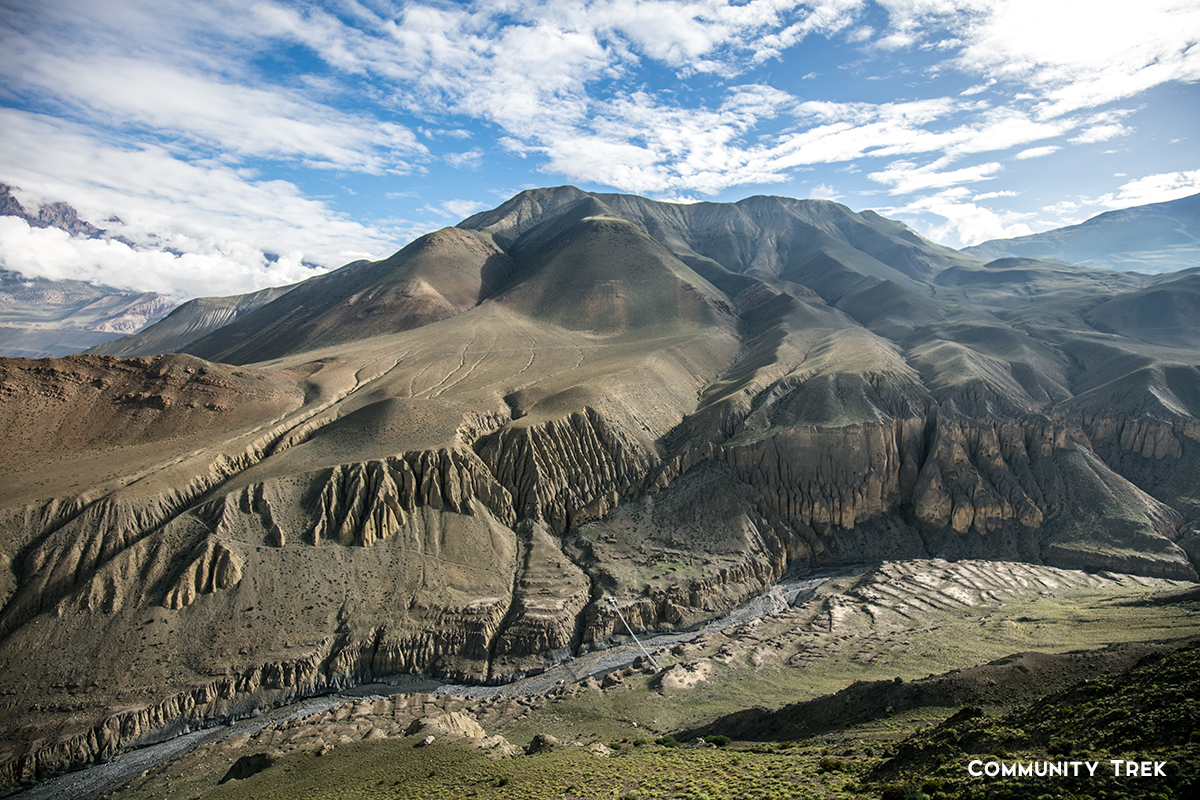
Take a 30-minute flight back to Kathmandu, where arrangements will be made to drop you off at your hotel. Your guide bids you farewell, and if you wish to extend any programs or require further assistance, we are delighted to help and make the necessary arrangements.
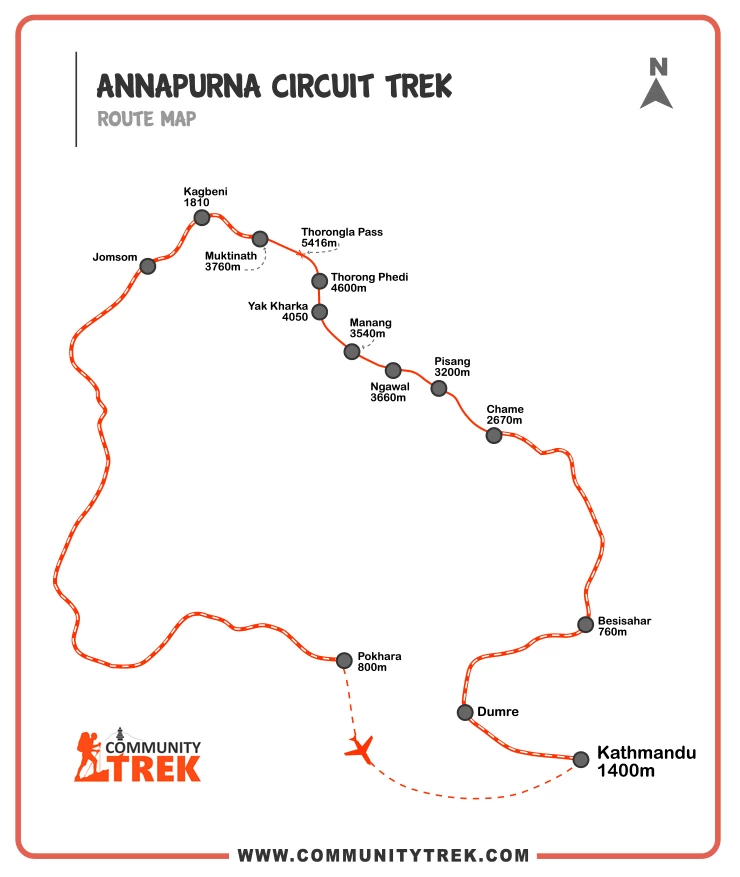
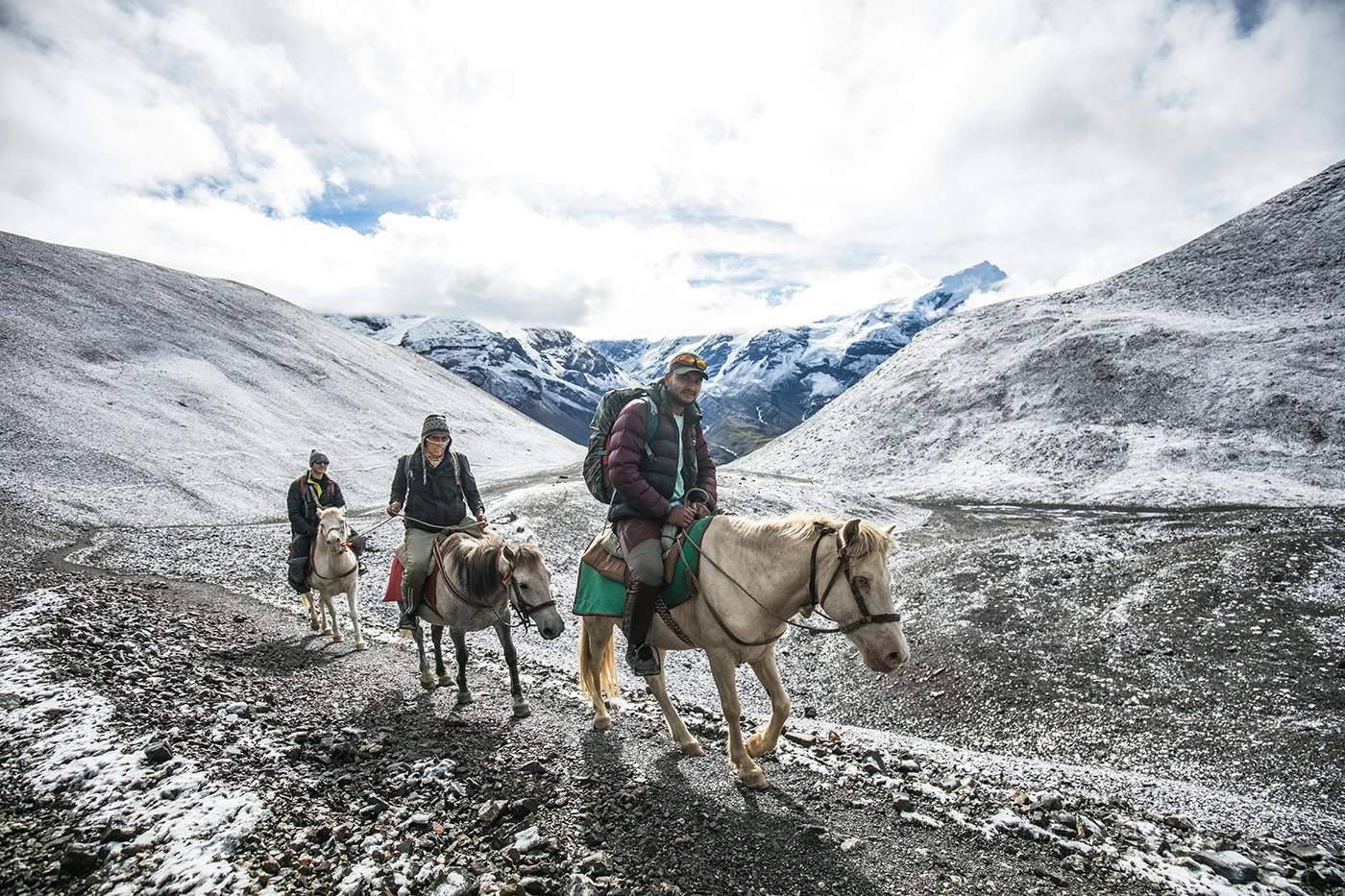
| Departure | Return | Duration | Price From |
|---|
500 US $ Deposit: Secure your spot with a minimum deposit. Remaining Payment: Pay anytime before the trip starts.
You can cancel anytime. Get a full refund up to 40 days before your trip. 50% refund up to 25 days before. 25% refund up to 15 days before. No refund after 15 days or after the trip starts.
There are a variety of accommodation options available for trekkers on the Everest Base Camp Lodge Trek. The most common type of accommodation is teahouses, which are small lodges that offer basic amenities such as beds and food. Teahouses are typically located in villages along the trail, and they are a good option for budget-minded trekkers.
The menu served in most teahouses on the Annapurna Circuit Trek is very similar. You can order a variety of hot-cooked dishes at your teahouse with a choice of both Nepali and Western meals every meal.
After receiving the confirmation of your Annapurna Circuit Trek, you will need to make a 30% deposit of the total trip cost. The remaining 70% can be paid before 7 days of the trip start date through our company's official bank Transfer.
The package cost already includes food, accommodation, permits, transport, guide, and porter fees. However, we recommend carrying an additional USD 200 per person or more to cover any unforeseen expenses or emergencies that may arise during the trek. It's always better to be prepared with extra funds to ensure a stress-free and enjoyable experience.
Here are some of the unexpected expenses that you may incur during your trek:
We suggest that you bring cash in major currencies such as EURO, which can be easily exchanged for Nepali Rupees in Kathmandu. Please note that only Nepali Rupees are accepted in the mountains of Nepal.
You may pay your deposit and balance using any lawful means. If sending money by electronic bank transfer, you will be responsible for covering the cost of the fees associated with the transfer. The company must receive the full amount shown on your invoice, in the denomination shown on your invoice.
Here are Community Trek’s Bank Details:
Bank Name: HIMALAYAN BANK LTD.
Account Name: Community Treks and Expedition Pvt. Ltd.
Account Number: 01908097270018
SWIFT Code: HIMANPKA
Address: Budanilkatha-12, Katmandu, Nepal
If you cancel your trip at any time between booking and the time of the trip, you may be subject to a cancellation fee. This is due to the company’s obligation to pay a certain amount for personnel and resources while booking them.
The following cancellation charges will apply:
All refund requests must be made in writing and be received in our office within the notice period stated above.
All trekkers must have comprehensive travel insurance that covers medical and emergency repatriation expenses, including helicopter rescue and evacuation up to 5000m. We can recommend insurance providers based on previous client feedback, but we do not sell insurance. We request our clients to send their insurance documents to us once they book the trek.
In emergencies, we will use your insurance and informational documents to facilitate a quick rescue operation, which must cover mountain rescue services at high altitudes.
Here are some of the things to consider when choosing travel insurance for your Annapurna Circuit Trek:
Read the fine print carefully to understand what is and is not covered by your insurance.
The following checklist should help you with your packing. As a general rule, you should always try to keep the weight of your equipment to a minimum. The packed weight of your trek bag while trekking should be no more than 10 KG. Here is a list of essential gear lists:
ON ARRIVAL IN KATHMANDU
ON THE TRAIL DAYPACK
CLOTHING: BASE, MIDDLE AND OUTER LAYERS
FOOTWEAR: SHOES AND SOCKS
SLEEPING BAG
DUFFEL BAGS AND DAY PACKS
FIRST AID KIT AND TOILETRIES
Our team brings along a basic first aid kit but we recommend you also carry the following;
PAPERWORK AND MONEY ON THE TRAIL
OTHER ITEMS
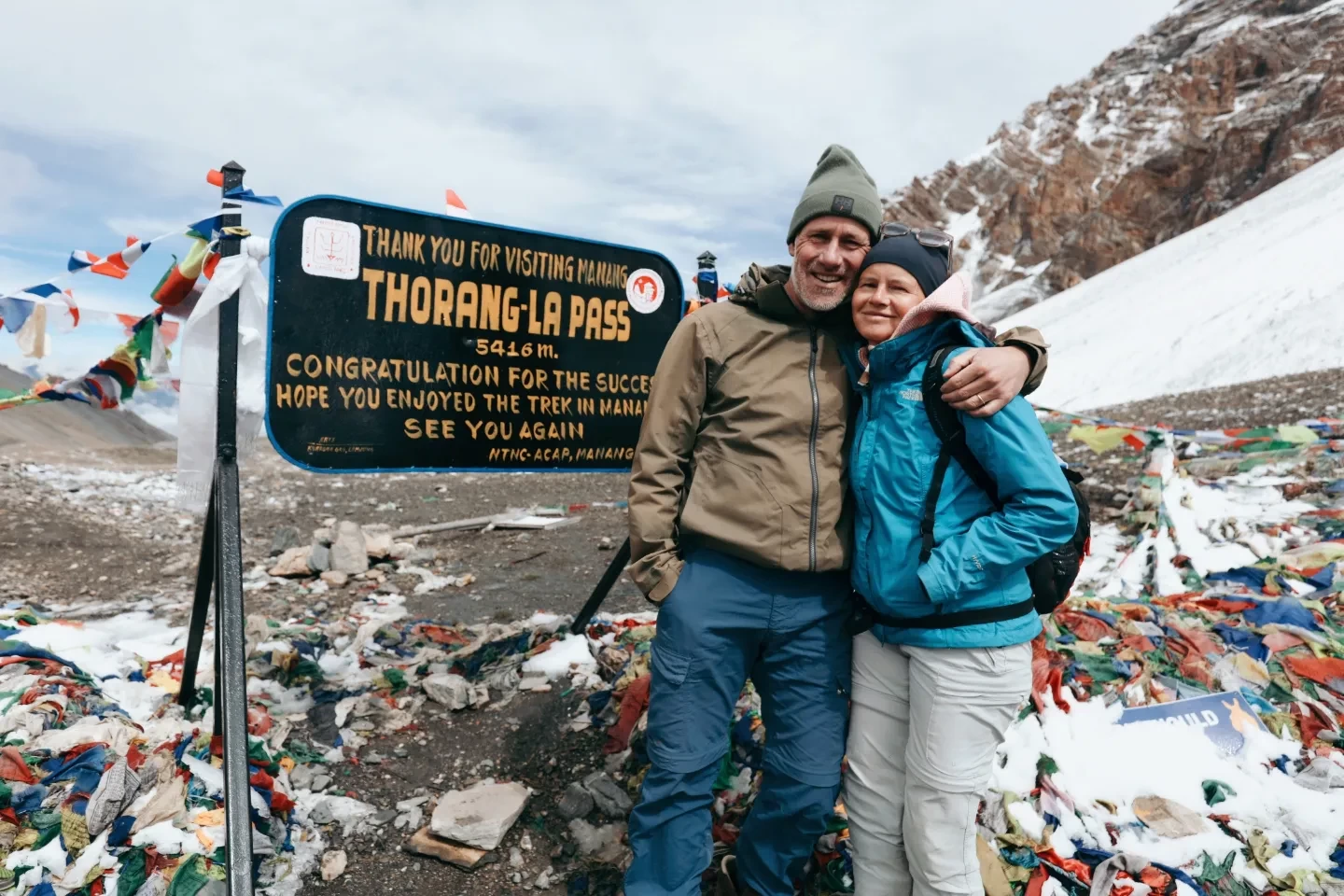
This summer we as a family had the privilege to have Ramesh and his team as our guides in the Mountains of Nepal/Annapurna region. Ramesh is very professional, and flexible and knows his way around the area. He is very open-minded, speaks English very well, and is an excellent photographer! He makes you feel comfortable and secure, makes sure you have good fun during the trip, and is well organized.
Write Your Review
Give Review